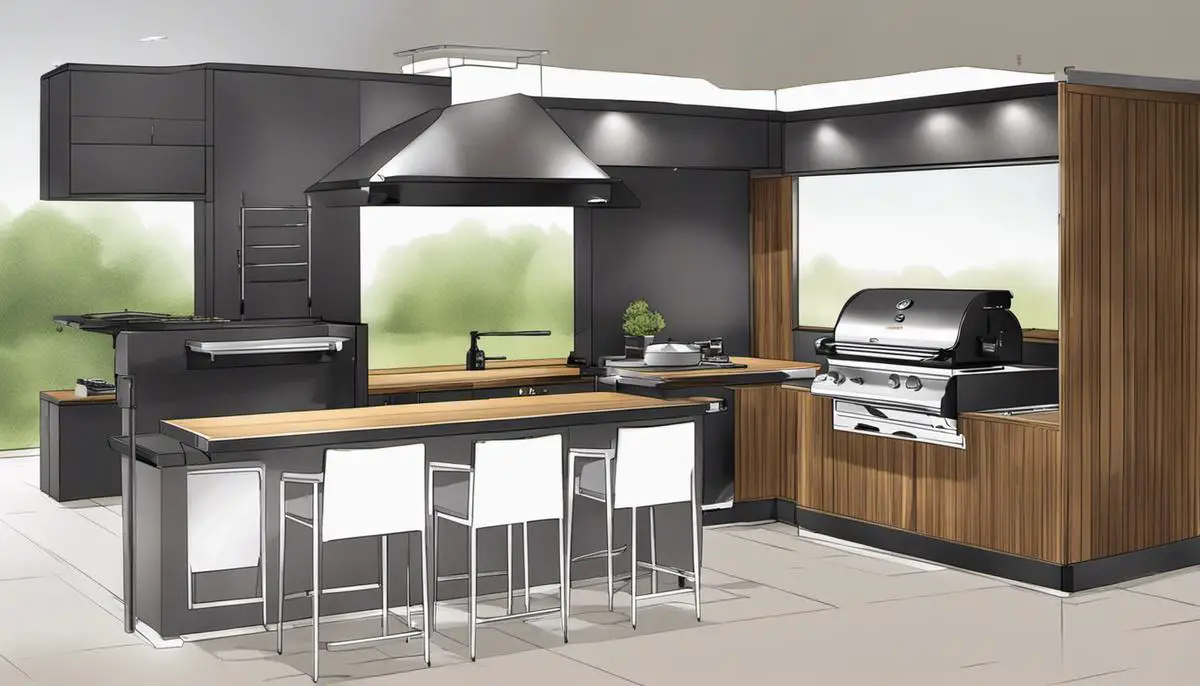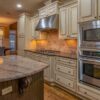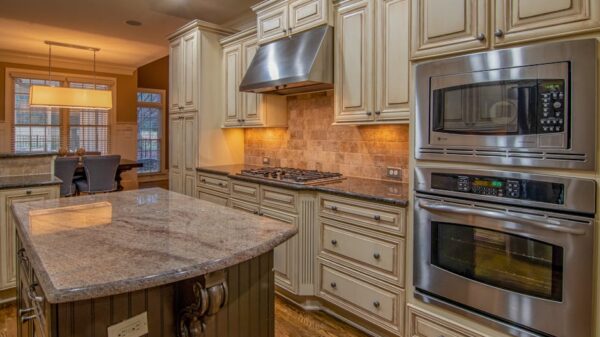Living in an apartment doesn’t mean you have to give up the joy of grilling. Compact grills provide the perfect solution to meet your grilling needs within limited spaces. The world of compact grills is vast and varied, offering a wide range of features suited for apartment dwellers. Whether you’re a grilling enthusiast looking to downsize your equipment or a beginner searching for a grill that fits your studio apartment, knowing about compact grills, their features, brands, maintenance, and cooking tips can guide you to make the right choice. This in-depth exploration of compact grills is designed to provide you with all the information needed to select, use, and care for the perfect grill to complement your lifestyle.
Understanding Compact Grills
Understanding Compact Grills
Compact grills are small, portable cooking appliances designed specifically for locations where space may be limited, such as apartments, small patios, or balconies. Despite their size, these grills are efficient and can cook a variety of foods, from steaks and burgers to vegetables and fish.
Typically, compact grills are lightweight and easy to move. Their size ranges from petite counter-top models that are not much bigger than a toaster oven, to slightly larger versions that occupy about the same footprint as a two-burner stove. Generally, compact grills will weigh less than traditional full-sized grills, making them easy to transport or store when not in use.
Compact Grills: Specifications and Features
Compact grills comprise numerous functionalities and characteristics. They often come with adjustable heat settings, allowing you to control the temperature and provide an even cook to your food. Many models include a built-in thermometer, beneficial for ensuring your food is safely cooked throughout. Some compact grills even have a non-stick surface for easy cleaning. The compact nature of these grills means they usually have a smaller cooking surface area, typically able to accommodate food for 2-4 people at a time.
Depending on the model, compact grills can be fueled by propane, charcoal, or electricity. Electric models are particularly suitable for apartment dwellers, as they don’t produce smoke or require fuel that can pose a fire risk. However, for those who prefer the smoky taste of traditional barbecue, compact charcoal grills are also available.
Advantages and Disadvantages of Compact Grills
There are several key benefits to using a compact grill, particularly for those residing in apartments. Their smaller footprint is ideally suited to environments where outdoor space is limited since you can easily position them on a balcony or small patio. Moreover, compact grills are also typically more affordable than their full-sized counterparts, making them a cost-effective choice for those on a budget.
However, there are also drawbacks to consider. The smaller cooking surface means you may not be able to cook large quantities of food at once. Additionally, though they are powerful for their size, compact grills may not achieve the same searing temperatures as a full-sized grill, which might affect the cooking results.
Compact Grills: The Perfect Fit for Apartments
For those living in apartments, compact grills have become a necessity due to their efficient space utilization and practicality. With the downsizing of living spaces in urban areas, owning a compact grill can be the perfect solution for those who don’t want to miss out on the joy of outdoor cooking, without the need for a backyard or a large balcony.
While compact grills might not include all the features of their full-sized counterparts, they nonetheless provide apartment residents with a practical and affordable option for outdoor grilling. With their user-friendly design and portability, compact grills continue to be an irresistible choice for those looking to make the most of their compact living spaces.
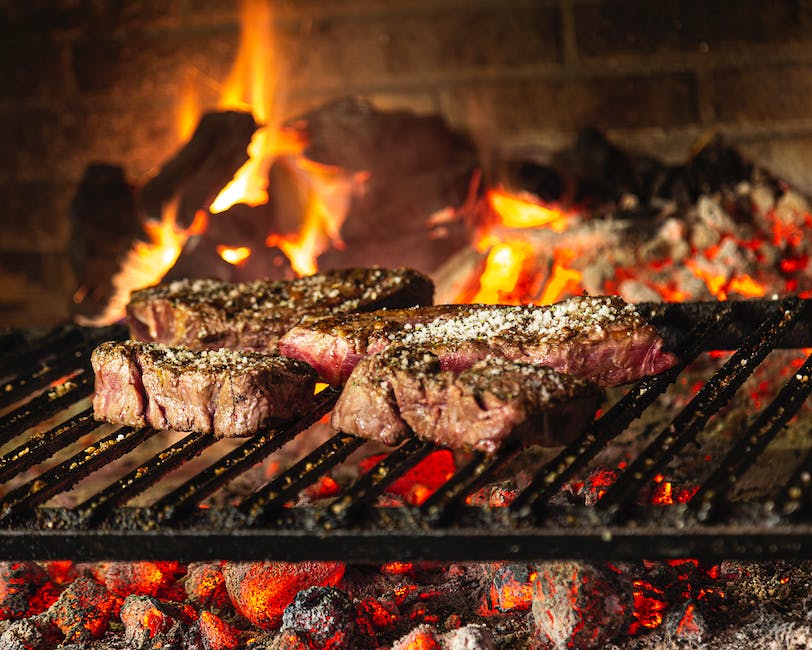
Evaluating Compact Grill Features
Pivotal Features to Take into Account while Procuring a Compact Grill for Apartments
Picking the right compact grill for smaller living areas like apartments entails careful consideration of several features. Primary among these is temperature control. A grill offering adjustable temperature controls enables you to diversify your meals, from high-heat searing for succulent steaks to slow roasting for tender ribs or brisket.
Another significant factor to consider is the grill’s build material. While stainless steel grills offer durability and rust resistance, cast iron variants are renowned for their superior heat retention and distribution, guaranteeing evenly cooked meals. Thus, despite the need for extra care to prevent rusting and enhance longevity, many consider them worthwhile. Aluminum grills are another alternative, offering lightweight construction and quick heating.
Ease of cleaning is another vital aspect to consider. Features like non-stick grill grates can significantly simplify the cleanup process. Some models even come with removable parts or a grease management system for added convenience.
In addition to these key aspects, various additional features can enhance your grilling experience. These include side tables for additional prep space, warming racks to keep food ready to serve, and wheels for effortless mobility.
Compact grills boast fuel type options ranging from gas and charcoal to electric. Your choice here would be influenced by apartment policies and personal preference. Electric grills are particularly popular in apartments as they are smoke-free and require only a power outlet to operate.
Size, while seeming obvious, is a crucial factor for apartment dwellers. Your chosen grill should be compact enough to fit into your available space but capacious enough to accommodate your cooking requirements. Smaller models are ideal for singles or couples, while larger ones are suitable for families or social functions.
Last but not least, safety features such as a secure lid, sturdy build, and cool-to-touch handles are vital to prevent accidental burns or fires, particularly in a constrained environment.
Each of these factors is critical and deserves careful consideration when making your purchase. In doing so, you’ll secure a compact grill that not only complements your apartment but also aligns with your unique cooking preferences and requirements.

Compact Grill Brands and Models
An Insightful Review: Weber Q1200 Liquid Propane Grill
If you’re on the hunt for a compact, portable outdoor gas grill perfect for apartments with limited outdoor spaces, then the Weber Q1200 Liquid Propane Grill merits a closer look. Retailing at $209, this grill balances affordability with high-quality performance. The Q1200 features a 189 square-inch primary cooking area equipped with a single stainless-steel burner, delivering an impressive 8500 BTU per hour. Additional features like push-button ignition and an inbuilt lid thermometer further enhance this grill’s ease of use and control. However, potential customers should note that purchase of a 14.1 or 16.4 oz propane cylinder is required separately, which may be off-putting for some.
Cuisinart CGG-059 Propane Grillster
The Cuisinart CGG-059 Propane Grillster offers exceptional convenience and portability with its lightweight design, weighing only 10 pounds. The 146 square-inch grilling area provides enough space to cook eight burgers, eight steaks, six to ten chicken breasts, or over four pounds of fish at one go, making it excellent for apartment living. On sale for $89.99, the Grillster may lack in fancy features, but it more than makes up with its functionality. It comes fully assembled with a 6000 BTU burner for even and precise cooking. Its disadvantage is its disposable LP gas cylinders, adding another expense to consider.
Hamilton Beach Electric Indoor Searing Grill
The Hamilton Beach Electric Indoor Searing Grill is perfect for indoor grilling lovers. This grill at $64.99 delivers high parameters of heat for a flawless searing performance. It has a 118 square-inch nonstick cooking surface with a lid window that allows you to monitor your food without lifting the lid. Its removable parts also ensure easy cleaning and maintenance. The main disadvantage of the Hamilton Beach Grill is its slow heating process.
George Foreman Indoor/Outdoor Electric Grill
The George Foreman Indoor/Outdoor Electric Grill, priced at $89.99, offers flexible cooking options with its fully electric system and adjustable temperature control. With its unique, sloping grates that assist with the draining of fat, the grill ensures healthier meal preparation. However, while it provides versatility and convenience, some users have reported inconsistent heating issues.
Char-Broil Performance 300 2-Burner Cabinet Gas Grill
The Char-Broil Performance 300, priced at $233.38, is a 2-Burner gas grill. It suits apartment dwellers who have more outdoor space. Despite its larger footprint, this grill has a compact design perfect for smaller areas. It comes with a 24,000 BTU Gas Grill featuring a 300 square inch primary cooking surface and a 100 square inch swing-away warming rack. One downside of this grill is its weight; it’s significantly heavier than the others, making it less portable.
Exploring Compact Grill Options
As an apartment dweller, you have a vast array of compact grills at your disposal. Each of these options comes with its unique features, benefits, as well as downsides. The commonality they all share is that they’re brilliantly designed for individuals living in apartments, allowing them to bask in outdoor cookery without having to compromise on their grilling capabilities.
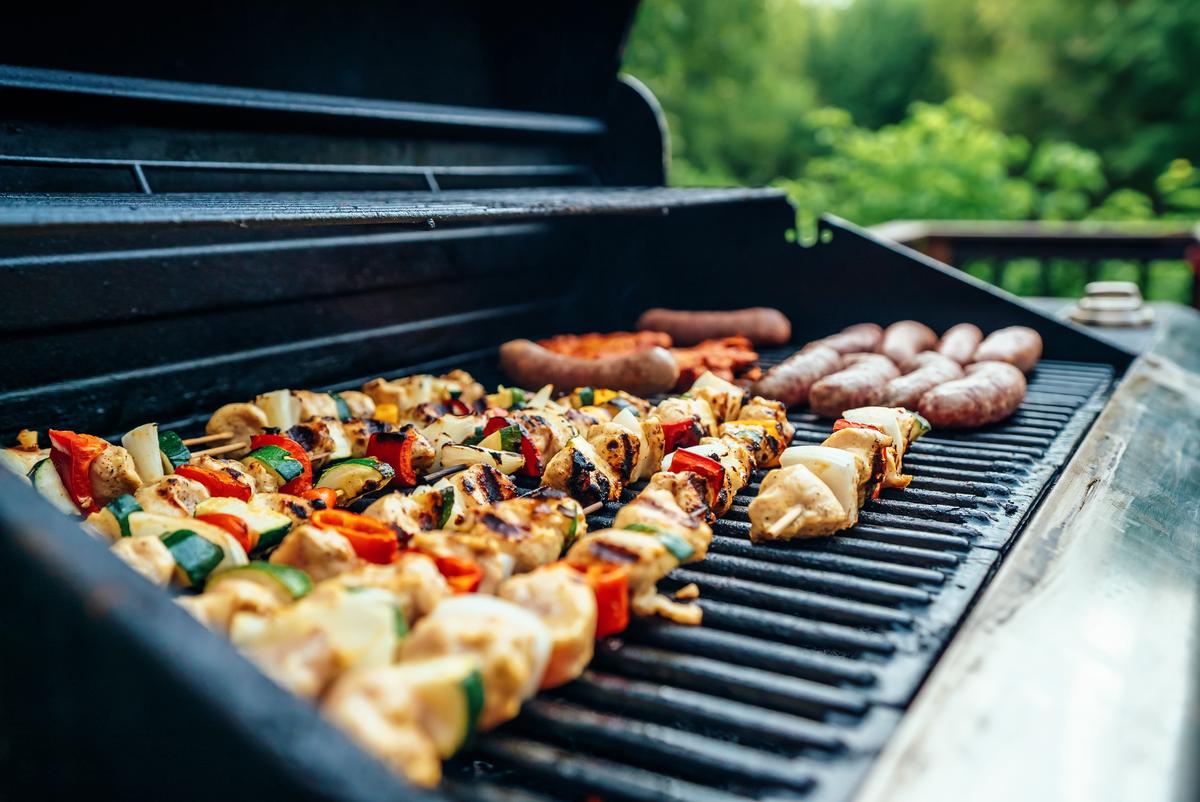
Photo by evanthewise on Unsplash
Maintenance and Care for Compact Grills
Ensuring Longevity With Proper Cleaning and Maintenance of Compact Grills
Whether you’re a frequent griller or only fire it up for special occasions, keeping your compact grill clean and well-maintained is indispensable. Cleaning and maintenance should become part of your routine, a task undertaken regularly and not just when you notice evidence of a problem. The frequency of this ritual is determined by how often you use your grill. Weekly cleanups are advisable for frequent use, while a thorough clean once a month should suffice in the case of occasional grilling.
Cleaning your grill is a straightforward task, requiring simple tools such as a grill brush, some warm soapy water, and a clean rag or sponge. After allowing the grill to cool, use the grill brush to dislodge any loose food particles from the grates, before washing them down with the warm, soapy water. For stubborn residue, opting for a mixture of vinegar and baking soda can work wonders.
The interior of your grill mustn’t be neglected, either. Take the time to remove any major grease build-up or ash (for charcoal grills), resorting to a plastic putty knife or a purpose-made tool to scrape clean the sides and base of the grill’s interior. For gas grills, it’s important to ensure that your burner tubes are clean and unrestricted.
Bearing in mind to take care of the exterior of your compact grill as well by cleaning it with a mildly soapy damp cloth or sponge. Make sure to avoid harsh chemicals or abrasive scrubbers which could potentially cause harm to the finish.
Maintaining and Troubleshooting Compact Grills
Compact grills require regular maintenance and understanding of common issues for smooth operation. When dealing with gas grills, an inconsistent flame or low heat might be an indication of a faulty gas tank or a broken regulator. Consider resetting the regulators by disconnecting and reconnecting the gas line, ensuring all control knobs are set to ‘Off’ in the meantime. If this doesn’t work, professional advice or a regulator replacement could be necessary.
Ignition difficulties could be due to a damp or dirty ignition button, or a defective spark generator. If the grill isn’t heating up evenly, perhaps your burner tubes need a check for potential blockages or replacement needs.
For charcoal grills, challenges in maintaining heat or getting the charcoal to light could suggest inadequate airflow. Make sure your grill’s vents aren’t blocked, and you’re using the right quantity and kind of charcoal for optimal heat.
A thorough grill inspection is part of effective upkeep. For gas grills, look out for gas leaks, and cracks or wear on the hoses. If troubleshooting proves too complicated, a professional’s input is a safer bet. Prioritize safety when using high-heat and potential fire-risk appliances.
Finally, a sturdy grill cover is an excellent investment to safeguard your compact grill from the elements, helping to keep it clean and rust-free. Regular attention and cleaning significantly extend your grill’s lifespan and guarantee safe and effective use for future grill sessions.

Cooking Tips for Compact Grills
The Importance of Pre-Heating Compact Grills
Pre-heating a critical step in grill preparation. Not only does it ensure that the cooking surface is at the ideal temperature before grilling, but it also provides an opportunity to clean the surface from previous grilling remnants using a grill brush. The majority of compact grills – those powered by gas or electricity in particular – need approximately 10 to 15 minutes to heat up adequately. A grill thermometer can be a crucial tool for verifying the grill’s temperature before you start cooking.
Managing Heat on Compact Grills
Heat management is an essential aspect of grilling. Two significant components, direct and indirect heat, dictate how your food cooks. Direct heat refers to the heat directly beneath the food, which is excellent for searing and cooking thin slices of meat. Conversely, indirect heat refers to the heat surrounding the food, making it ideal for thick or bone-in cuts that need time to cook thoroughly.
Most compact grills have adjustable temperature controls that allow you to manage the heat. It’s important to be acquainted with your grill to know what settings achieve direct or indirect heat. If your grill heats unevenly, consider turning your food periodically to ensure it cooks uniformly.
Checking Food Doneness When Grilling
The grill marks on your food don’t always indicate doneness. Instead, temperature is the most reliable indicator. For this, you’ll need a meat thermometer. Place the thermometer in the thickest part of the meat, avoiding any bones. Each type of meat has a recommended internal temperature to ensure it’s adequately cooked. For example, steaks should reach an internal temperature of 145°F, burgers 160°F, and chicken 165°F.
Additionally, be sure to allow your meat to rest for a few minutes before cutting into it. This step allows the juices to redistribute within the meat, making it more flavorful and satisfying.
Cooking Various Food Types on Compact Grills
Compact grills are versatile and can handle a wide range of food. You can grill meat, vegetables, and even fruit. Always apply a light layer of oil on your food to prevent sticking and add flavor.
For meat, the grill’s high heat helps it develop a flavorful crust while sealing in moisture. For vegetables, grilling can enhance their natural sweetness. Try zucchini, bell peppers, or asparagus for a change. Fruits like pineapple, peaches, and plums can also be grilled for a sweet, smoky summer dessert.
Remember, timing is critical as every food has a different cooking time. Keep a close eye to prevent overcooking.
Safety Tips for Compact Grills
Even when using a compact grill, safety should never take a backseat. Ensure your grill is set up in a ventilated area away from flammable materials. Never leave it unattended when in use. Frequently clean it to prevent build-up that can cause unsafe flare-ups.
Last but not least, if you’re using a gas grill, always check for leaks in your gas tank and hoses before lighting it. Following these steps will ensure a safe and enjoyable grilling experience in your apartment.

Having the ability to prepare your favorite grilled meals within the confines of your apartment is a luxury that compact grills afford. Whether you’re considering compact grills for their space-saving benefits or their ease of use, the knowledge you’ve gained about key features, leading brands, maintenance tips, and cooking methods will prove essential. Remember, the grill that is right for you depends on your specific needs and preferences. Keep the information outlined in this discussion in mind when you set out to purchasing and using your compact grill. Here’s to many delicious and enjoyable grilling sessions right at the comfort of your apartment!


